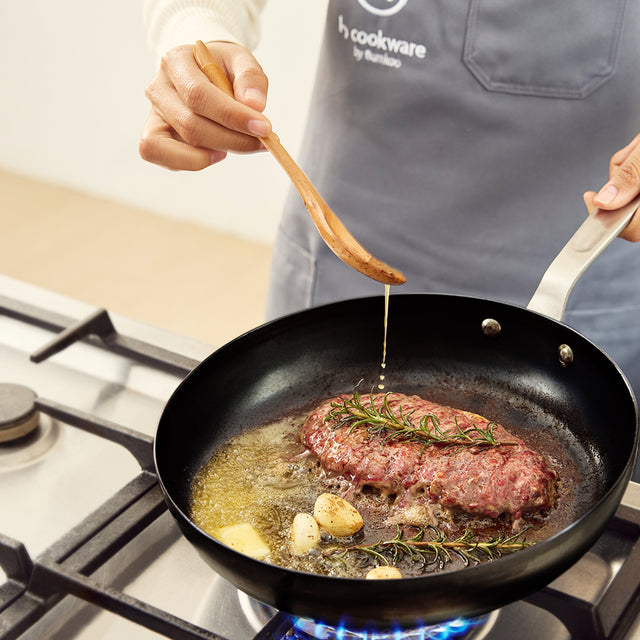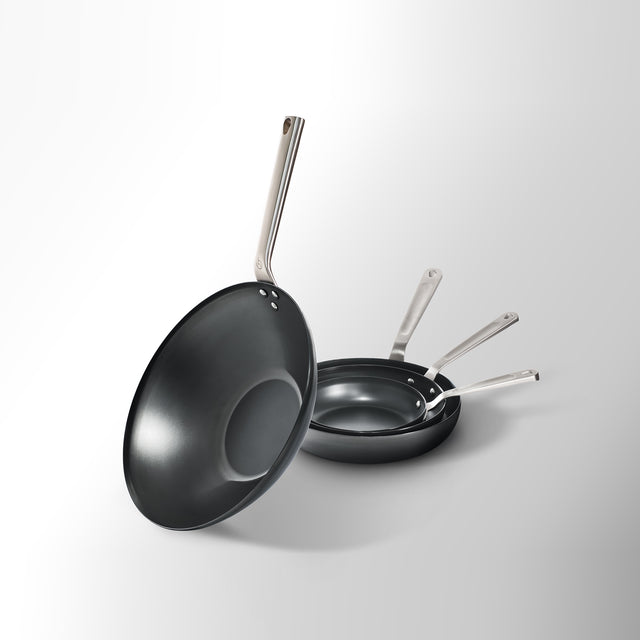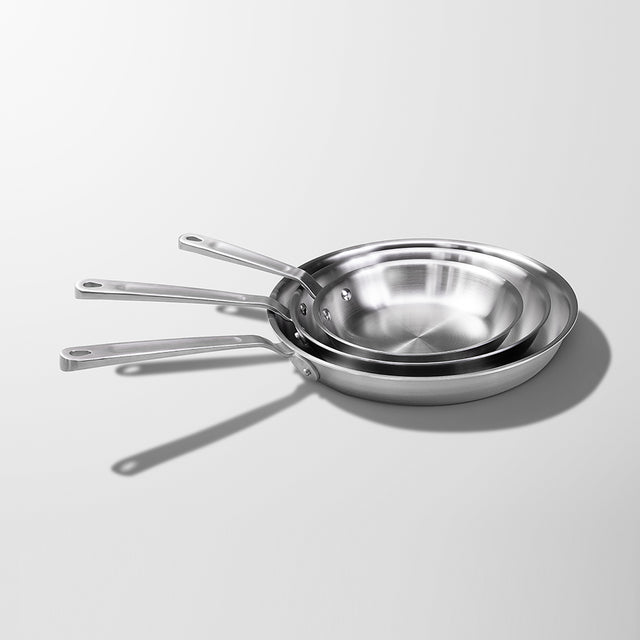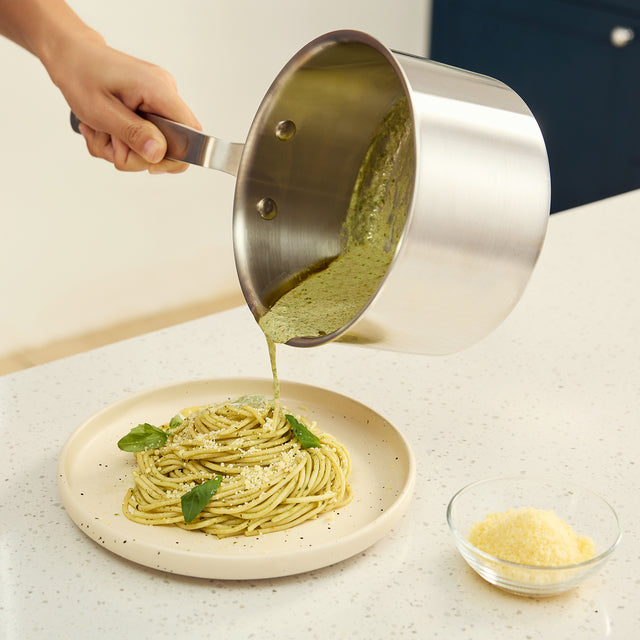This is a common question we receive from chefs whether new or old. And the answer is simple: it depends. Both our stainless clad and nonstick frying pans are excellent. Which is best for you depends on what you cook, what qualities you require and then personal preference. You really can’t go wrong with either pan.
Stainless Clad
Our stainless clad pans are made from 3-ply material (stainless steel 18/10 cooking surface, aluminum core, and stainless steel 430). They are versatile, durable, non-reactive, and excellent at heat distribution with an aluminum core.
Pros
- Everyday pan that is non-reactive and can be used for most cooking from sauteing, searing, browning, and frying.
- Built to last a lifetime with proper care.
- Can be used on all cooktops (gas, electric and induction) and oven safe up to 260ºC.
- Heats evenly and quickly, and retains heat.
Things to Consider
- Surface is not nonstick. However, with proper technique and oil, you can cook delicate foods like eggs and fish.
- Harder to clean than nonstick. Food can stick to the surface if left on the surface for a long time.
Stainless clad pan is a kitchen workhorse that will last a lifetime with proper maintenance and care.
Nonstick
Our nonstick pans are coated with PTFE (aka Teflon) which is PFOA free and prevents food from sticking and is easy to clean up. They are made of the same 3-ply material as our stainless clad pans with the added nonstick surface.
Pros
- Surface is slick and food does not stick. It is easy to cook eggs, pancakes, fish or anything really.
- Cleaning is quick and easy. Use soap and warm water, and soft cloth to wash.
- You don’t need oil or butter since it is nonstick and can reduce your fat intake.
Things to Consider
- Nonstick surfaces do not last a lifetime like the stainless clad. They scratch easily and with proper care, they need to be replaced after three-to-five years.
- PTFE is a non-organic compound that you should not heat above 260℃ or it releases toxic fumes.
Nonstick pan is easy to use and clean, especially for more delicate foods, and does not require any oil to cook.
Other Material Types
Carbon Steel Pans are made from 99% iron and 1% carbon. They are lighter and thinner than cast iron. They are durable, retain heat well, and can be used with high heat. They require regular seasoning, reactive to acidic foods, may rust or discolor, and are harder to clean.
Cast Iron Pans are made of an alloy of usually 98% iron and 2% carbon. They are heavy, durable and made of one piece of metal. They retain heat well, handle high heat and are versatile. The pans need to be regularly seasoned to create a nonstick layer. They are slower to heat, require special care in cleaning, and are reactive to acidic foods.
Impact-Bonded Base Stainless Steel Pans are cheaper and lighter than stainless clad pans as the conductive core material is bonded to the pan’s base. The sides of the pan do not conduct heat evenly as they only have one layer consisting of steel. They are not as durable as stainless clad, and the bonded plate may separate from the pan over time.
More stories
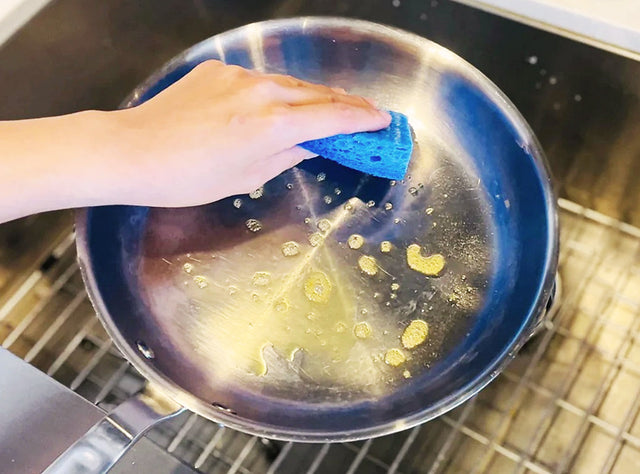
Care Instruction for Stainless Clad





